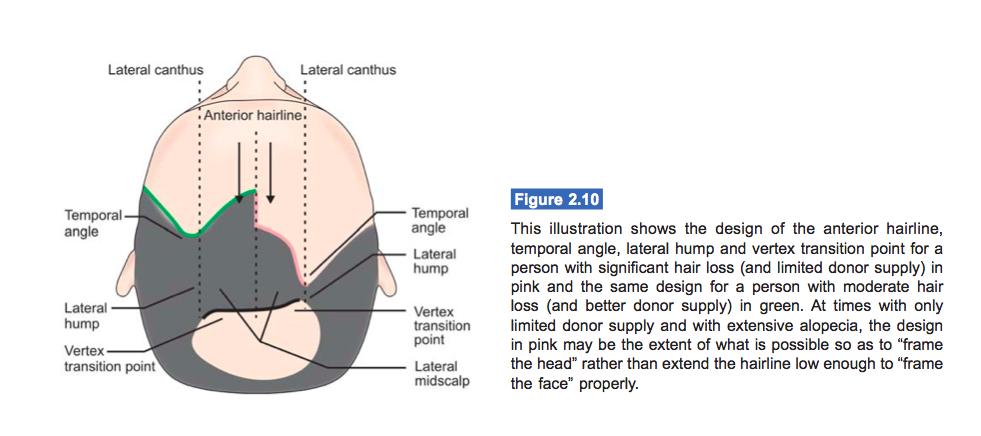Designing Hair Patterns for Hair Restoration Based on Usable Donor Hair
In an ideal world, even the baldest man could have a fulfilling hair transplant and have his entire head covered with hair again. Obviously, this is realistically not always the case. It is a question of supply and demand: supply being how much usable donor hair there is to transplant the area and demand being how extensive the baldness is. When someone has very advanced hair loss, Norwood VI or VII, typically they also have very small reserves of donor hair left. This type of case can still be transplanted but much more conservatively. Believe it or not, a pretty advanced Norwood IV or V can be transplanted very effectively if the donor hair density is relatively high.
But what can be done when someone has very poor donor density and very extensive baldness? In many of these cases, I recommend someone just to shave his head because I think a small designed forelock and a large open crown (as seen on the right side of the diagram) is less ideal than having a cleanly shaven pate. This is not always the case though. Many men over 50 years of age simply do not like a shaved head and prefer to keep a fringe of bald hair around the backside. For them, any hair on top would make them feel better about themselves. In these cases, I then recommend a very conservative design that can frame the head, i.e., transplant hair that will block view of the back of the head, but not necessarily frame the face, i.e., a more suitable design that makes the face completely framed with hair.

from Dr. Lam’s textbook “Hair Transplant 360”
The diagram illustrates on the left side in green a typically designed hair transplant for someone between a Norwood III to V with adequate donor hair to do the job. (Remember Norwood I and IIs do not require a transplant.) For advanced hair loss of a Norwood VI or VII with accompanying poor donor hair density a more conservative hairline design that barely meets the isolated lateral hump must be designed. The extent posteriorly that the transplant can go will also be compromised so that the arc of the vertex transition point goes forward to meet the lateral hump at a small point. Judgment by an experienced hair transplant surgeon evaluating one’s particular “supply and demand” issues can help set up realistic expectations to what is achievable with a given hair transplant procedure.
Dr Samuel Lam is a board certified hair transplant surgeon in Dallas, TX. To schedule a consultation please call 972-312-8105, or visit Dr Lam’s hair transplant forum to ask him a question.




